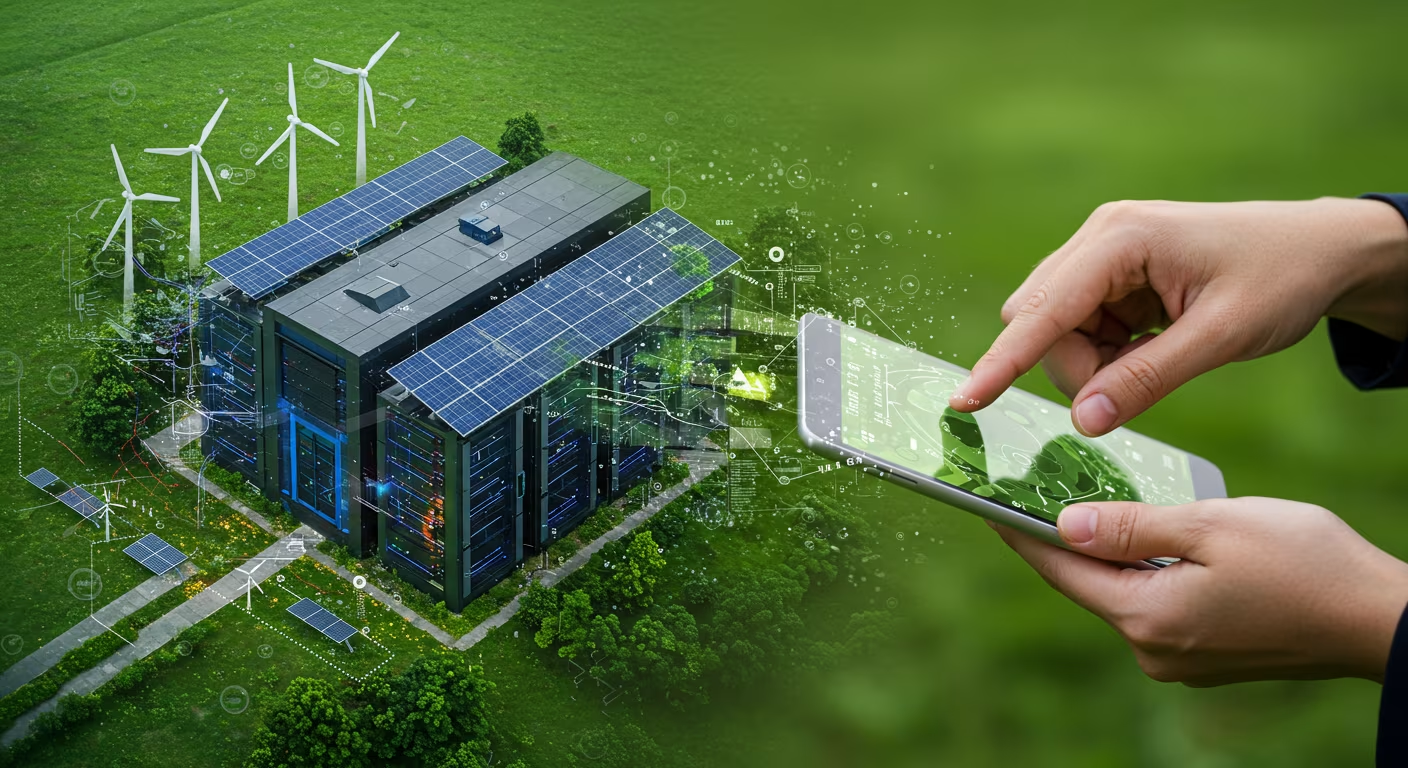In a world increasingly reliant on digital technologies, the hidden cost of convenience is becoming harder to ignore. From cloud storage and streaming to artificial intelligence and cryptocurrency, our digital habits are powered by an energy-hungry infrastructure that leaves a growing environmental footprint.
Enter Sustainable Computing—an emerging discipline focused on minimizing the ecological impact of computing systems and digital technologies. It is not just about reducing electricity usage; it’s about designing hardware, software, data centers, and policies that align with the principles of efficiency, longevity, and environmental responsibility.
As climate change intensifies and the demand for computing continues to grow, sustainable computing is no longer a niche concern—it’s a strategic imperative for businesses, governments, and consumers alike.
What Is Sustainable Computing?
Sustainable computing refers to the design, deployment, and use of computing technologies in ways that minimize their environmental impact. This includes:
- Reducing energy consumption in data centers, servers, and devices
- Extending the lifespan of hardware through repairable and modular design
- Using eco-friendly materials and reducing electronic waste
- Optimizing software to require fewer computing resources
- Leveraging renewable energy sources to power digital infrastructure
- Promoting responsible end-of-life recycling for electronic equipment
The goal is to balance technological innovation with environmental stewardship—ensuring that the digital transformation does not come at the cost of planetary health.
Why It Matters More Than Ever
The scale of the problem is enormous. According to the International Energy Agency (IEA), data centers alone consume about 1–1.5% of global electricity, a figure that could grow exponentially with the rise of cloud computing and artificial intelligence.
Here are some startling facts:
- Streaming one hour of HD video consumes approximately 3–7 gigabytes of data, which requires energy-intensive data processing and transmission.
- Bitcoin mining and blockchain networks have energy demands rivaling those of small countries.
- E-waste is the fastest-growing waste stream globally, with only 17.4% of electronic waste properly recycled.
As the digital economy expands, sustainable computing offers a path to continued innovation without compromising the planet’s future.
Core Principles of Sustainable Computing
To implement sustainable computing effectively, organizations and individuals must embrace a multi-layered approach that spans hardware, software, and operations.
1. Energy-Efficient Hardware
Choosing energy-efficient processors, storage systems, and displays can reduce power consumption significantly. Manufacturers are now producing low-power chips and solid-state drives (SSDs) that offer better performance per watt than traditional components.
Efforts like Energy Star certification and EPEAT ratings help buyers identify sustainable electronics that meet environmental performance criteria.
2. Green Data Centers
Modern data centers are becoming the backbone of the digital world—and the biggest consumers of electricity in the process. Green data centers aim to lower their Power Usage Effectiveness (PUE) by:
- Using natural cooling systems instead of energy-hungry air conditioning
- Deploying AI to optimize server workloads and reduce idle time
- Investing in renewable energy sources like solar, wind, or hydroelectric power
- Locating facilities in cooler climates to reduce thermal output
Companies like Google, Microsoft, and Amazon have committed to carbon neutrality or net-zero emissions in their cloud services—a move driven partly by consumer demand and environmental policy.
3. Software Optimization
Software design also plays a crucial role. Bloated applications and inefficient code waste computing power and battery life. Sustainable software development focuses on:
- Minimizing background processes and data requests
- Reducing CPU and memory usage through optimized code
- Implementing lazy loading and caching to conserve resources
- Using green algorithms—AI models trained to perform tasks with lower energy consumption
Even something as simple as choosing a dark mode in applications or websites can save energy on OLED screens.
4. Hardware Lifecycle Management
Extending the life of electronic devices is one of the most impactful steps in sustainable computing. Instead of following the “buy, use, discard” model, organizations and consumers can adopt:
- Device reuse and refurbishing programs
- Modular design for easy part replacement
- Right-to-repair policies that support user maintenance
- Recycling partnerships to recover valuable materials like gold, copper, and rare earth metals
Tech companies that offer trade-in, recycling, and repair support are helping close the loop in electronics production.
5. Sustainable IT Policies
At the enterprise level, sustainable computing is also about governance. Green IT policies might include:
- Virtualization and cloud computing to reduce hardware needs
- Remote work strategies that reduce energy use in office spaces
- Carbon accounting tools to track and offset emissions
- Partnering with eco-conscious vendors and suppliers
By embedding sustainability into their digital strategy, organizations can reduce costs, meet ESG (Environmental, Social, and Governance) goals, and enhance their brand reputation.
The Role of AI in Sustainable Computing
Ironically, artificial intelligence—which contributes to high energy usage when training large models—can also help make computing more sustainable.
AI can optimize power grids, reduce data center cooling needs, and predict maintenance for hardware to extend its life. Google, for instance, uses DeepMind AI to control cooling in its data centers, reducing energy use by up to 40%.
Emerging fields like Green AI focus on building algorithms that are not just accurate, but also efficient—prioritizing models that use fewer resources without compromising performance.
The Consumer’s Role
Sustainable computing isn’t just the responsibility of tech giants and governments. Consumers can make a significant impact by:
- Using energy-efficient devices and turning them off when not in use
- Supporting companies with clear sustainability practices
- Extending device life through maintenance, repair, and updates
- Using cloud storage mindfully and avoiding unnecessary digital clutter
- Recycling old electronics at certified e-waste facilities
In a connected world, small individual choices can add up to massive collective change.
Challenges Ahead
Despite progress, several barriers remain:
- Short product cycles incentivize frequent upgrades rather than longevity
- Lack of consumer awareness about digital carbon footprints
- Complex supply chains make it difficult to assess true environmental impact
- Legislative gaps leave sustainable design as an option, not a requirement
To overcome these, a combined effort of regulation, innovation, and education will be needed.
Tech With a Conscience
Sustainable computing is more than a trend—it’s a mindset. As we move deeper into the digital age, the need to align our computing power with planetary limits is becoming urgent and unavoidable.
From energy-efficient chips to green software and responsible recycling, the future of computing will be shaped not just by what it can do, but by how responsibly it can do it.
By embracing sustainable computing now, we can build a smarter, greener, and more resilient digital future—for ourselves and for generations to come.





